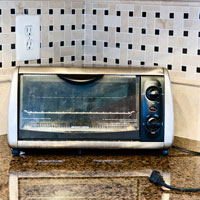Fire Prevention Begins With You
Most fires are preventable. With a little education and forethought, you can help prevent 88% of the fires started. The other 12% are mostly started by an act of nature. Take just a little of your time to educate yourself on ways to prevent fires. This page contains several videos, graphics, and checklists that you can download to help you in your fire prevention knowledge.
If you have any questions, give us a call or fill out our contact form.
Sincerely,
Kenneth Scott
Fire Chief

Facts To Know About Fire
Fire is FAST!
There is little time!
In less than 30 seconds a small flame can get completely out of control and turn into a major fire. It only takes minutes for thick black smoke to fill a house. In minutes, a house can be engulfed in flames. If you wake up to a fire, you won’t have time to grab valuables because fire spreads too quickly and the smoke is too thick. There is only time to escape.
Fire is DARK!
Fire isn’t bright, it’s pitch black.
Fire starts bright, but quickly produces black smoke and complete darkness. If you wake up to a fire you may be blinded, disoriented and unable to find your way around the home you’ve lived in for years.
Fire is HOT!
Heat is more threatening than flames.
A fire’s heat alone can kill. Room temperatures in a fire can be 100 degrees at floor level and rise to 600 degrees at eye level. Inhaling this super-hot air will scorch your lungs. This heat can melt clothes to your skin. In five minutes a room can get so hot that everything in it ignites at once: this is called flashover.
Fire is DEADLY!
Smoke and toxic gases kill more people than flames do.
Fire uses up the oxygen you need and produces smoke and poisonous gases that kill. Breathing even small amounts of smoke and toxic gases can make you drowsy, disoriented and short of breath. The odorless, colorless fumes can lull you into a deep sleep before the flames reach your door. You may not wake up in time to escape.
Home Safety Guides
Below are several printable checklists and guides to help you to create a fire safe home. Download the guide(s) that are right for your living arrangement. Be sure to go through the lists to be prepared and to have the right safety equipment and procedures in place. Lives depend on it.
Cooking Safety
Cooking Fire Safety
Keep Things That Can Catch Fire Away from Heat
Keep Kids Away from Cooking Areas
Know What to Do If You Have a Cooking Fire
Stay in the Kitchen When Cooking
Grilling Fire Safety
Fire Safety
Electrical Fire Safety in the Home
Fire Safety for Older Adults
Smoking and Fire Safety
Keep Heaters Three Feet Away
Stay in the Kitchen When Cooking
Winter Fire Safety




